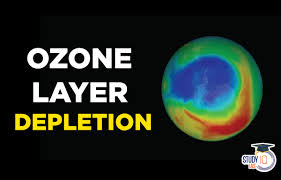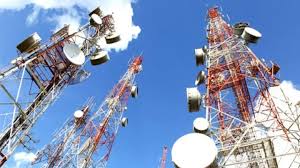Due to the depletion of ozone layer, there is an increase in ultraviolet radiation which has effected human health, plants and the entire ecosystem. HELEN OJI writes.
The continue depletion of the ozone layer has allowed high doses of ultraviolet radiation to reach the earth which can have serious consequences on human health, plants, marine ecosystems, biogeochemical cycles and materials.
Skin cancer, cataracts
Studies have shown that increase in the amount of UVB radiation reaching the Earth’s surface can cause non-melanoma skin cancer and known to play a major role in malignant melanoma development. Aging of skin which makes one to look older than actual is another problem associated with exposure to UVB radiation. Exposure could also lead to more cataracts that could result in damage to eyes (blindness). According to the World Health Organisation (WHO), 10% thinning of the ozone layer could cause 1.6 to 1.75 million more cases of cataracts worldwide every year (2002).
Plants growth can be negatively affected by UVB radiation, crops that are found to be sensitive to UVB radiation include rice, wheat, soybean, corn, sweet corn, barley, oats, cowpeas, peas, carrots, cauliflower, tomato, cucumber, broccoli. Reduction in yield of these resulting from excessive UVB exposure could lead to famine on a global scale. Planktons, which are at the base of the marine food chain are negatively affected by exposure to UVB radiation. In fact, Scientist have demonstrated a direct reduction in phytoplankton production due to ozone depletion related increases in UVB through reduction of the survival rates of the organisms. This has negative implications for the whole marine food web. UVB radiation has also been found to be detrimental to the early development stages of crabs, shrimp, fish other marine animals, Resulting in impaired larval development and decreased reproductive capacity. Animal in the upper food web that feed on these are also negatively affected.
Reduce agricultural crop
“It also damages vegetation and ecosystems. It leads to reduced agricultural crop and commercial forest yields, reduced growth and survivability of tree seedlings, and increased susceptibility to diseases, pests and other stresses such as harsh weather. In the United States alone, ground-level ozone is responsible for millions of dollars in reduced crop production each year. Ground-level ozone also damages the foliage of trees and other plants, affecting the landscape of cities, national parks and forests, and recreation areas.
Additional, increases in UVB radiation could affect terrestrial and aquatic biogeochemical cycles, thus altering both sources and sinks of greenhouse gases and chemically important trace gases such as carbon monoxide, ozone. Potential changes resulting, could contribute to biosphere atmosphere feedbacks that mitigate or amplify their atmospheric concentrations. UVB radiation affects naturally occurring biopolymers, synthetic polymers as well as some other materials of commercial interest. Wood, plastic, rubber, fabric and many construction materials are degraded by UVB radiation with the concomitant economic implications.
Lung tissue
Breathing ozone can trigger a variety of health problems including chest pain, coughing, throat irritation and congestion. It can worsen bronchitis, emphysema and asthma. “Bad” ozone also can reduce lung function and inflame the linings of the lungs. Repeated exposure may permanently scar lung tissue. Healthy people also experience difficulty breathing when exposed to ozone pollution. Because ozone forms in hot weather, anyone who spends time outdoors in the summer may be affected, particularly children, outdoor workers, those with chronic health conditions and people exercising. Millions of Americans live in areas where the national ozone health standards are exceeded. The EPA has designated over 300 counties of the United States, clustered around the most heavily populated areas (especially in California and the Northeast), as failing to comply with the National Ambient Air Quality Standards. Nashville, Chattanooga, and Johnson City-Kingsport-Bristol area all have agreements with EPA to meet national ozone standards.




